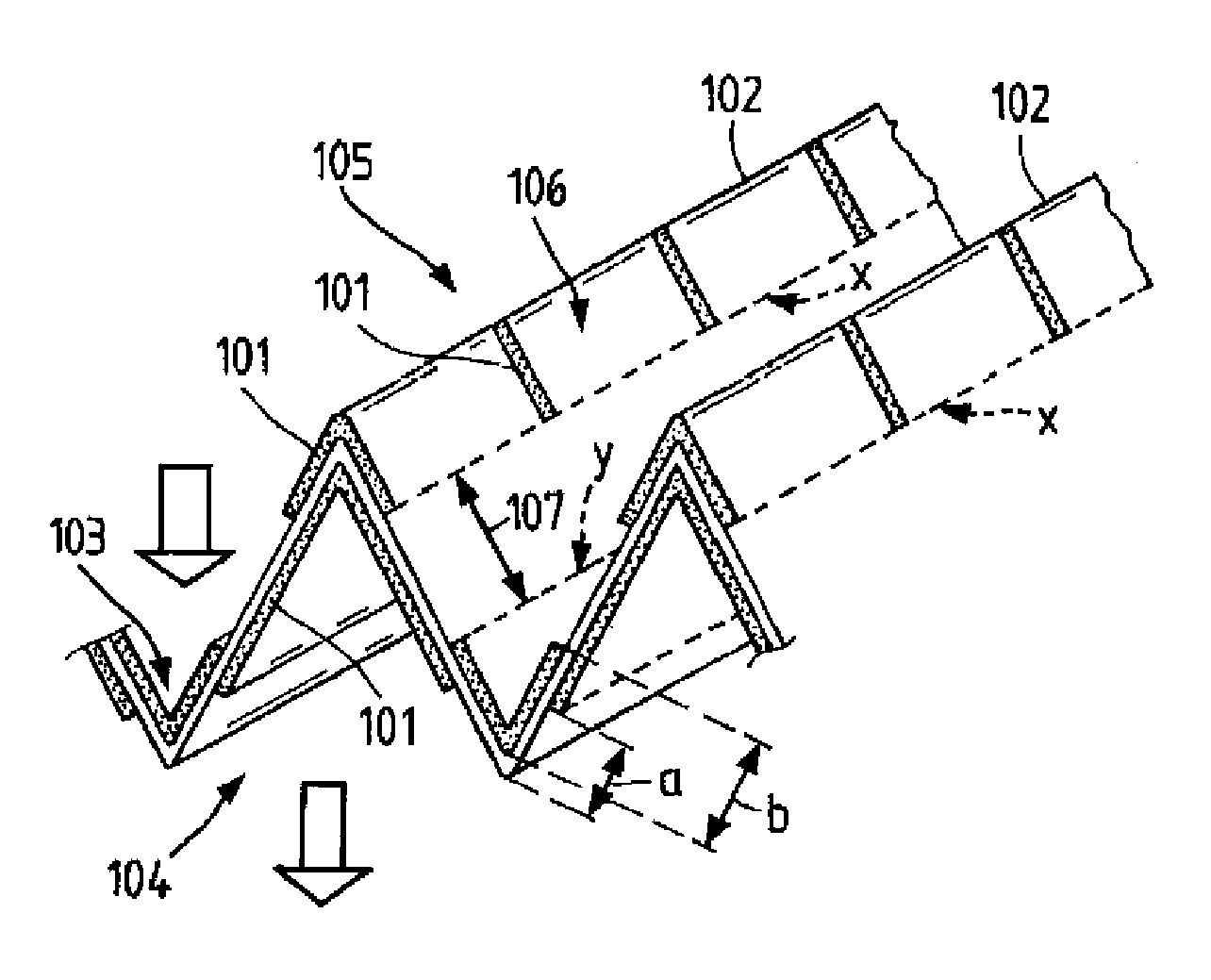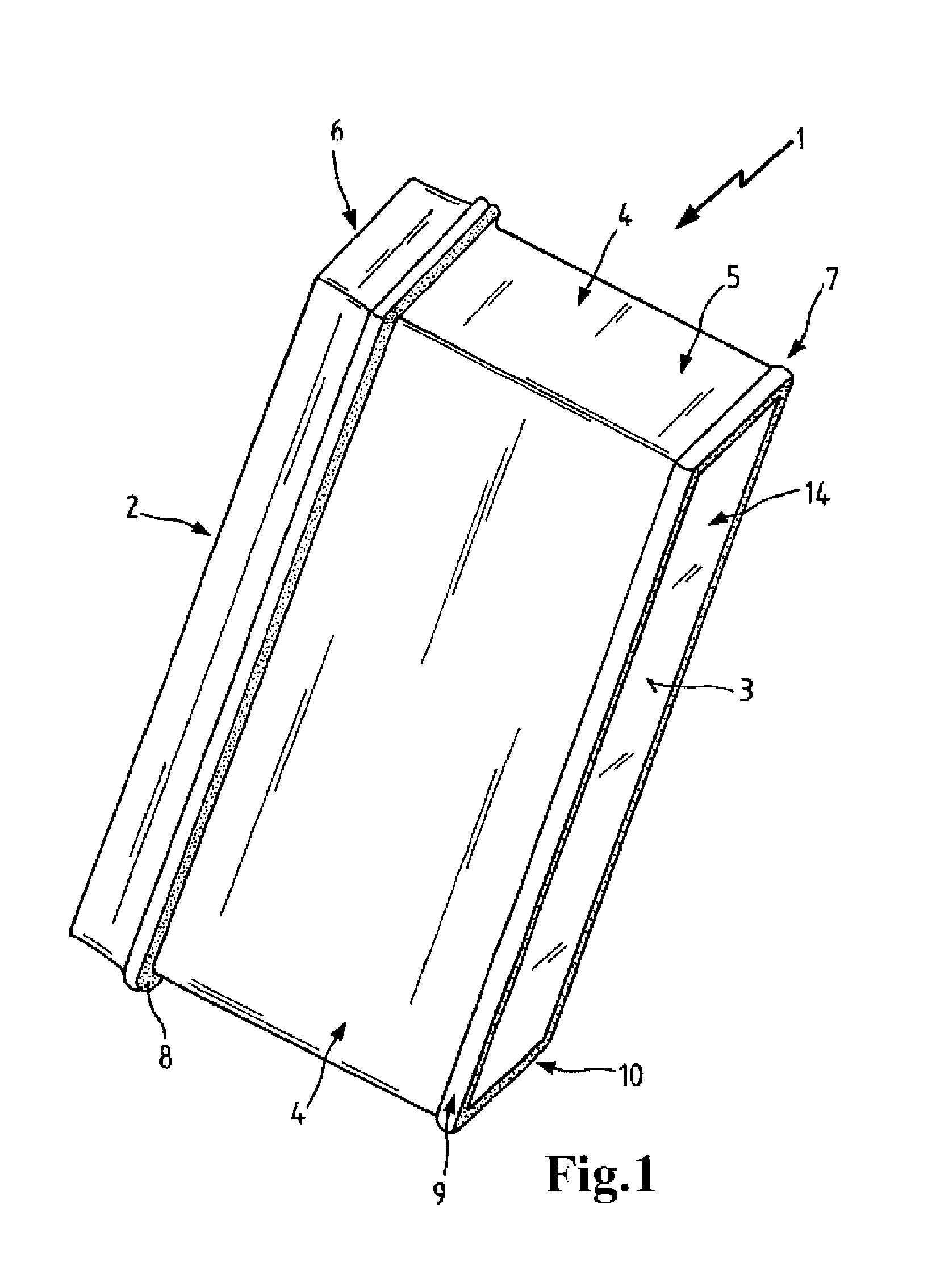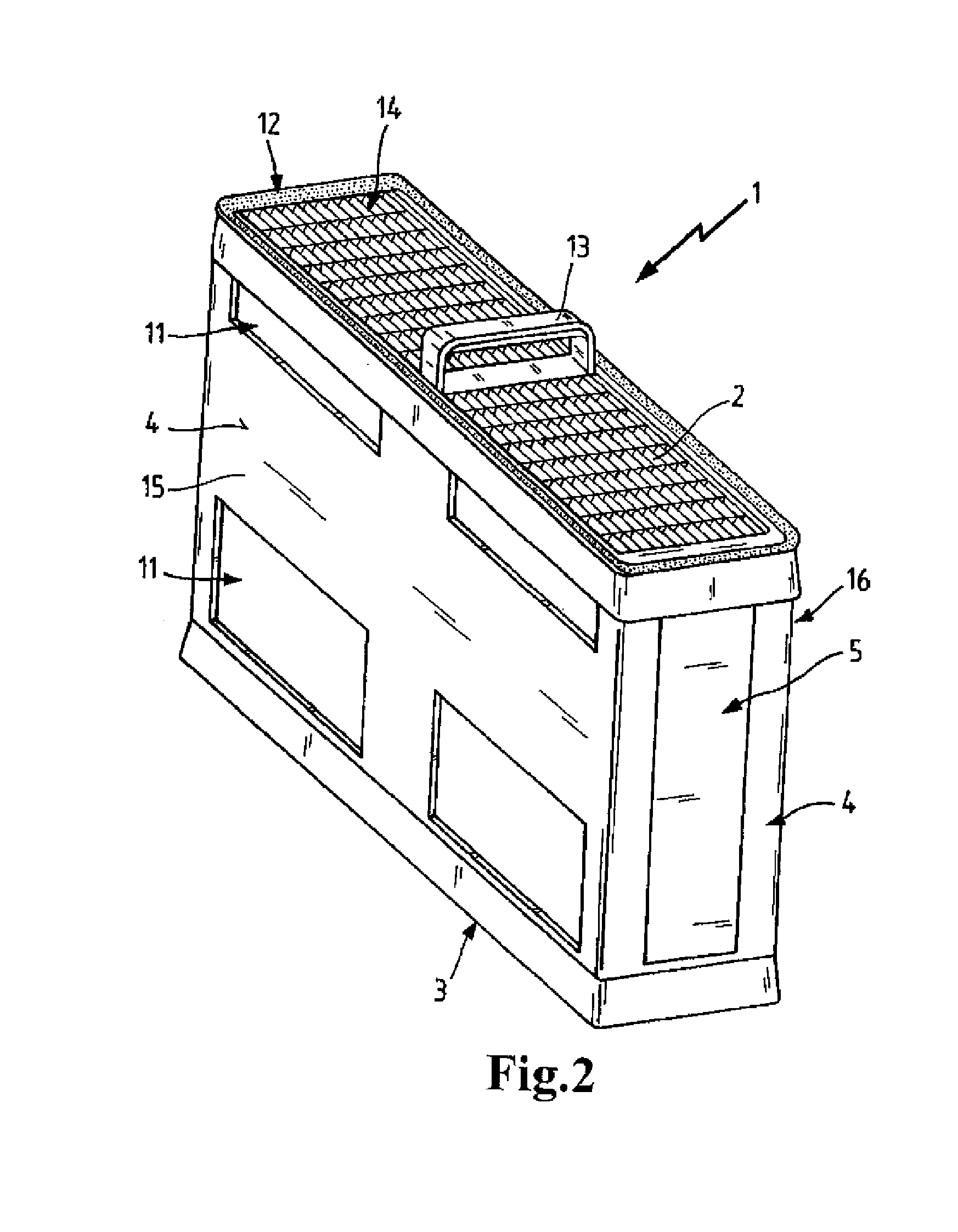Filter Element and Process for Producing a Filter Element
- Summary
- Abstract
- Description
- Claims
- Application Information
AI Technical Summary
Benefits of technology
Problems solved by technology
Method used
Image
Examples
example 2
[0112]In the same weight proportions a polyester hotmelt adhesive with a melting point of 150-160 degrees Celsius, substantially formed of 40% by weight butanediol, 33% by weight terephthalic acid, 27% by weight adipic acid, and a polyamide hotmelt adhesive with a melting point at 130 degrees Celsius, formed of 67% by weight of ε-caprolactam, 5% by weight of 2,2,4-trimethyl hexamethylene diamine, 12% by weight of 1-amino-3-aminomethyl-3,5,5-trimethyl cyclohexane and 16% by weight of adipic acid are mixed in granular form and melted jointly with dynamic mixing. The stringing tendency is determined qualitatively such that a round metal rod of 1 mm diameter is immersed into the melt and pulled out suddenly. In Example 2, a hotmelt adhesive droplet remains on the round metal rod into which the string that is formed directly after pulling out the metal rod from the melt pulls back. A remaining string is not recognizable. The stringing tendency is therefore determined to be minimal.
example 3
[0113]The polyester hotmelt adhesive (Sika Sikamelt 9420) with an elongation at break of approximately 50-60% is mixed as in Example 1 in weight proportions of 60:40, 65:35, 70:30 (the polyester hotmelt adhesive is mentioned first in each case) with a polyamide hotmelt adhesive (Henkel Macromet 6208) with a melting temperature between 188 and 195 degrees Celsius and a density of 1.02 g / cm3 and is tested with regard to stringing tendency.
[0114]In Example 3 a hotmelt adhesive droplet remains on the round metal rod into which the string, that is formed immediately after pulling out the round metal rod from the melt, pulls back completely or partially, depending on the mixing ratio. The effect is here significantly less pronounced than in the application of the two hotmelt adhesives when used separately.
example 4
[0115]The polyester hotmelt adhesive of Example 2 and a polyamide hotmelt adhesive with a density of 0.97 g / cm3, a softening point of 190-205 degrees Celsius (Henkel Macromet 2035) are mixed in weight ratios of 30:70, 50:50, and 70:30 in analogy to Example 1 and tested. In Example 4, a hotmelt adhesive droplet remains on the round metal rod into which the string, that is formed immediately after pulling out the round metal rod from the melt, will pull back. A remaining string is not recognizable or significantly smaller than in the application of the two hotmelt adhesives when used separately, wherein the stringing tendency increases again beginning at a weight proportion of 70% of the aforementioned polyester adhesive. The stringing tendency is therefore determined to be minimal.
PUM
| Property | Measurement | Unit |
|---|---|---|
| Percent by mass | aaaaa | aaaaa |
| Percent by mass | aaaaa | aaaaa |
| Percent by mass | aaaaa | aaaaa |
Abstract
Description
Claims
Application Information
 Login to View More
Login to View More - Generate Ideas
- Intellectual Property
- Life Sciences
- Materials
- Tech Scout
- Unparalleled Data Quality
- Higher Quality Content
- 60% Fewer Hallucinations
Browse by: Latest US Patents, China's latest patents, Technical Efficacy Thesaurus, Application Domain, Technology Topic, Popular Technical Reports.
© 2025 PatSnap. All rights reserved.Legal|Privacy policy|Modern Slavery Act Transparency Statement|Sitemap|About US| Contact US: help@patsnap.com



